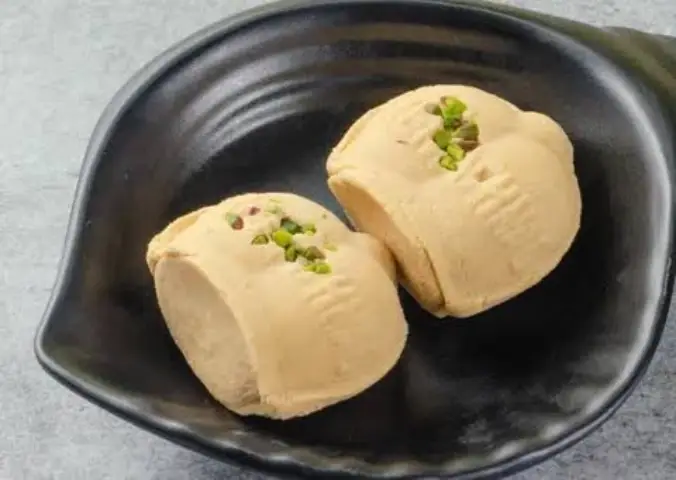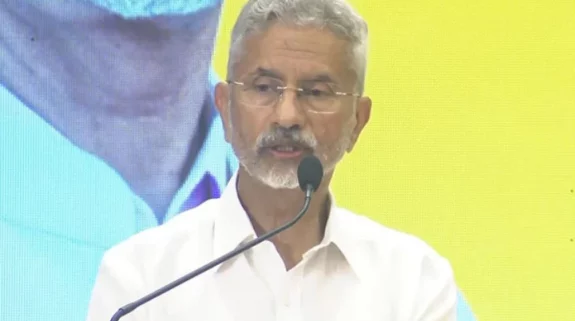I was on a vegan cruise on the Ganga recently, aboard a ship called the Ganges Voyager owned by the company Antara River Cruises focussed on special interest travel.
As we sailed on the river which is so much more than a river in India, I got a chance to visit the small towns and villages dotting rural Bengal, as we sailed upstream from Kolkata to Murshidabad, the erstwhile Capital of the Bengal nawabs, past the battlefield of Plassey, where in a mango orchard that no longer exists, fortunes changed hand in India as Clive’s East India Company force defeated the last nawab of Bengal Siraj ud Daula, paving way for 200 years of colonialism in the Subcontinent.
Battle of Plassey, 1757.
Mir Jafar defected to Robert Clive for a bribe. Gave less than 1000 Europeans his force of 15,000 cavalry & 35,000 infantry.
Clive went on to defeat Jafar’s weakened boss, Siraj-ud-Daula, the last Nawab of Bengal, and take Calcutta.
The world changed. pic.twitter.com/ill3663WoZ
— Wajahat S. Khan (@WajSKhan) July 18, 2020
We also passed Budge Budge, a small settlement where the first Chinese immigrant to Bengal had arrived and started a sugar refining mill. From this little village, a robust community of Chinese immigrants in India, and their descendants the Indian Chinese have grown, giving us also unique food that we now recognise as Indian Chinese and that is as much Indian as any other.
Devotees offering prayers inside the #ChineseTemple at #Achipur, Budge Budge. You’ll get to see it in the upcoming episode (No. 2) of #SutanutiDiaries which is based on the #Chinese community in #Calcutta. #Travel #TravelBlog pic.twitter.com/GFfeZz1dy6
— Nayan Basu (@NayanBasuu) February 28, 2018
Then, there was the Portuguese colonial settlement Bandel, from where the cheese of the same name, very fashionable currently in upscale Indian restaurants, originated. You do not in fact find any Bandel Cheesemaking in Bandel today—it has been revived in Kolkata and sold there.
The “West Bank” of the Hooghly is in fact where many different immigrants from different lands came to India and settled, bringing with them their own cultures, beliefs and food, and in turn being impacted by the great and old civilisation of India.
Like the cuisine of Lucknow that I wrote about a few weeks ago, the cuisine of Calcutta is considered to be one of India’s first “modern” cuisines—concocted in the 19th century, as rich landowners moved to the British India Capital for commerce from these small towns and villages dotting both sides of the Ganga. The cooking of these small towns, full of simple Bengali flavours of a countryside that is rich and fertile with different varieties of rice, fish, fragrant lime, brinjal, haldi, custard apple and more, combined with influences from the Colonial maritime powers that made some of these villages their base, came to Calcutta and along with the Anglo-Indian influence in the city, resulted in a new genre of cuisine that influences Indian palates even today.
The most recognisable of the Calcutta/Bengali innovations of the late 18th-early 19th centuries is the mishti made from channa. This fresh “cheese” made from curdled milk is very similar to European fresh cheeses like quark, and a result of the Portuguese presence in Bengal from the 16th century onwards.
Sandesh, the most basic and earliest of the Bengali mithai as we know it today, literally means “news”, and connoted perhaps just a lump of sugar, or anything sweet in its earliest version — a custom that no doubt spread from the “mooh meetha karna” (sweeten the mouth) of any bearer of good tidings in northern India.
The modern Sandesh only came into being in the late 18th-19th centuries, when the moiras or traditional halwais in Bengal started experimenting with European technique of splitting the milk that was considered a taboo in Vedic Hinduism. Khoya, the ancient milk solid, may have been the basis of mithai prior to this in the region that also saw a strong Bhakti movement in Chaitanya, whose birthplace too is nearby.
In the erstwhile French colony of Chandannagar that I visit is a famous mishti shop of Surjya Kumar Modak, where a famous variety known as the Jalbhara Sandesh was invented in 1818 by the sweet maker. Today, his fifth generation runs two-three establishments by the same name. The Jalbhara Sandesh was clearly Indian inventiveness at its peak. Made to mimic a taal fruit or water apple that smells of roses once you sip the liquid in it, Surjya Kumar Modak made a hard channa shell and filled it with rose water, used extensively in Mughal gastronomy that had held sway in Bengal before East India Company snatched power in the richest province of India.
Love for Jolbhara
Surjya Kumar Modak is the best place for it.#kolkatalocal #kolkata #bengali #sweets pic.twitter.com/N9ueEXfOVm— kolkata_local (@kolkata_local) June 27, 2020
The request had come from a rich landowner to create a sweet for his daughter’s wedding that would impress and perplex the bridegroom—another common ritual, based on Mughal showmanship, where “paheli ka khana” was an established convention at feasts.
Today, the Jalbhara Sandesh is a delicacy, and a heritage dish. I tasted it in Surjya Kumar Modak’s iconic shop in Chandannagar—the version filled with rose water, as also another filled with mango pulp. The Nolen Gur Sandesh with liquid palm jaggery in season is another descendant of this Sandesh.
It is tempting to think that French liqueur chocolates may have influenced this Jolbhara Sandesh. But in fact, when I looked up the history of chocolate making in Europe, I found that a Dutch chemist created powdered Dutch chocolate only in 1828, a whole 10 years after the invention of Jalbhara Sandesh, and the powder became a base for making solid chocolate only post that. Till then, though chocolate had been known to the Europeans since the 16th century after the Spanish conquest of South America, and though rich Europeans – and even the middle class—was drinking hot chocolate as a beverage combined with milk and sugar by the 18th century, chocolate as a bar, or as truffles and shells filled with liqueur was not known till well into the late 19th century, even later.
Could then the Indian mithai tradition which was so innovative have influenced the French? Particularly since the Jalbhara Sandesh is a delicacy of Chandannagar, a French colony till the 1950s? We will never have a firm answer, but we may conjecture.
Also Read: How Cinnamon from India spiced up Christmas in Europe














